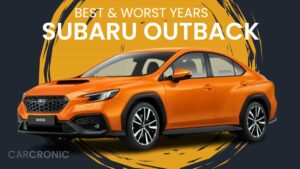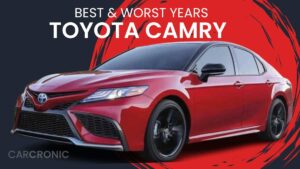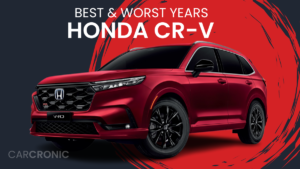We’ve put the each Subaru Forester model for each and every generation so that you aren’t picking the most sour Subaru Forester years and pick the most desirable one.
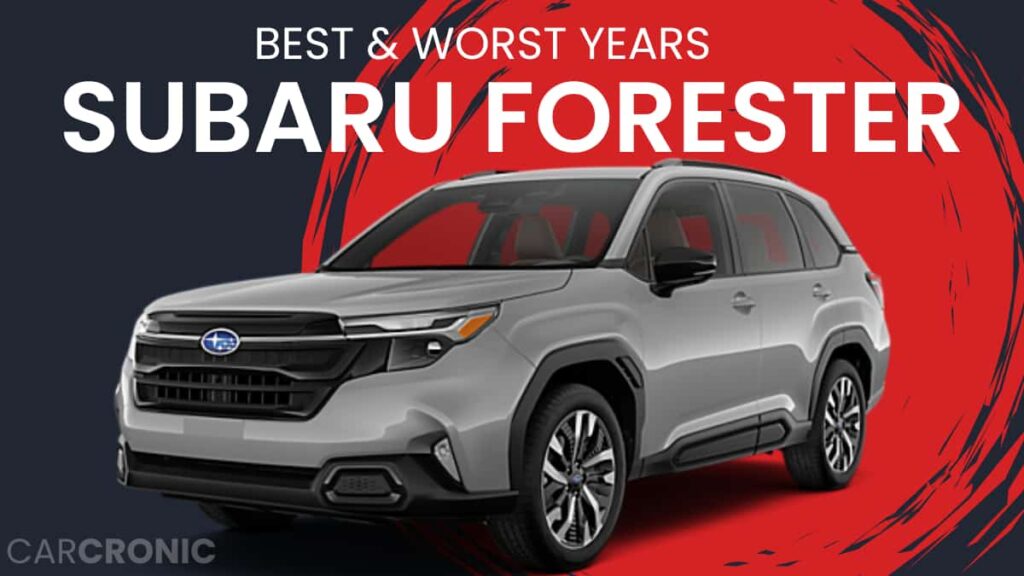
In this article I will look at the top and worst Subaru Forester years, breaking down its reliability, safety, as reviews from owners and complaints.
By leveraging data from extremely reliable sources such as NHTSA, Consumer Reports, and Kelley Blue Book We’ve combined the years of feedback from owners as well as safety ratings and recall information to give an accurate view of how the forester’s life journey.
Find out which years of Forester are the best to purchase in terms of quality and reliability and which are just normal, as well as which years to steer clear of.
Let’s get started.
Subaru Forester Generations
Subaru Forester Subaru Forester has evolved through many generations since its introduction in 1998. The first model represented the merging of car-like luxury with SUV-like utility, offering increased visibility and the ability to drive all-wheels. Subaru has always emphasized the safety of its drivers and has made the Forester an ideal option for a variety of driving conditions.
Certain owners have reported transmission problems in specific year models, including those of two generations (2003-2008). Subaru’s dedication to innovation has resulted in continuous improvement in the following generations.
| Generations | Years |
| 1st generation (SF) | 1998-2002 |
| 2. Generation (SG) | 2003-2008 |
| 3rd generation (SH) | 2009-2013 |
| 4th generation (SJ) | 2014-2018 |
| 5th generation (SK) | 2019-Present |
The development of generations in the automotive industry brings major shifts in design, technology and performance. These changes play an important part in determining the worth and performance of the car. If you are considering buying a car knowing the differences between generations aids buyers in making informed choices. For instance, newer models might have more sophisticated security systems, better efficiency of fuel, and improved driving performance.
Subaru Forester’s Best Year, neutral and Worst Years
We look at a myriad of variables to ensure our ratings are reliable and reflect the Forester’s safety, performance, and the satisfaction of the owner. Our evaluations are heavily based on:
- Reliability of the owner (surveys)
- Costs for annual maintenance
- Ratings for safety
- Consumer Reports ratings on its reliability
- Consumer Reports Owner satisfaction scores
- NHTSA recalls, investigates and also complaints
- Edmunds owner reviews
- JD Power owner ratings
- Kelley’s Blue Book (KBB) owner ratings
- Ratings of owners on the VehicleHistory website
- Cars.com owner reviews
The graph that is to follow provides an illustration of the combination of ratings from the mentioned platforms.
Then, we’ve compiled our categorizations and categorized every model year as the most desirable, neutral or the worst.
| Generation | Best Years | Neutral Years | Worst Year |
| 1st generation (SF) | 200020012002 | N/A | 19981999 |
| Second generation (SG) | 200320042005 | 20072008 | 2006 |
| 3rd generation (SH) | 20112012 | N/A | 200920102013 |
| 4th generation (SJ) | 20162018 | N/A | 201420152017 |
| 5th generation (SK) | 202120222023 | 2020 | 2019 |
Neutral Years are those that do not make a statement in terms of performance or dependability, nor show signs of decline. They remain in the middle without straying too far to either the superior or inferior categories.
It is crucial to realize that certain indicators can have a negative effect on the rank of a car. Like, for instance, the quantity of NHTSA recalls can be a negative indicator. The more recalls and complaints a model is subject to the less trustworthy it is judged to be.
Let’s take a look at the details of the top as well as the worst years.
Best and Worst Subaru Forester Years, 1st Generation (1998-2002)
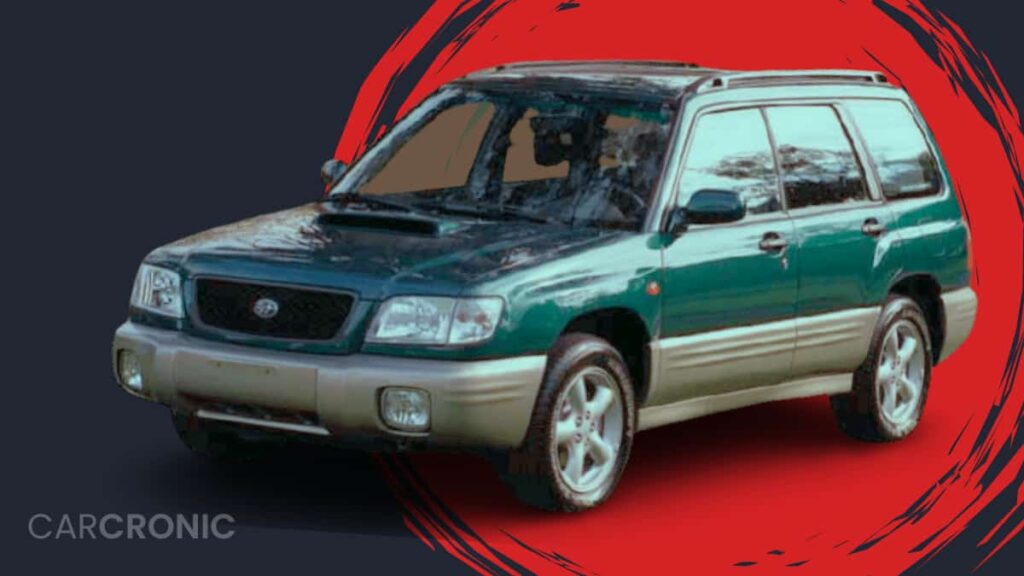
It was the first generation Subaru Forester, introduced in 1998, set the bar for compact SUVs, the combination of ruggedness and suburban convenience. The innovative vehicle quickly gained acclaim due to its plethora of features and nimble handling across all terrains. The most successful year for the Subaru Forester was 2001, which saw an overhaul and upgraded protection features. It made the vehicle more attractive to potential buyers.
The most difficult year for the initial-generation Forester in 2002 was since it had some issues with reliability in the engine’s components, which required regular maintenance. The Subaru Forester’s early models are popular with enthusiasts for their endurance and off-road abilities. The combination of comfort and utility in these early models earned an enduring fan base that has lasted until today.
Best Years For Subaru Forester: 2000, 2001, 2002
Between 2000 and 2002 Between 2000 and 2002, between 2000 and 2002, the Forester witnessed significant improvement in efficiency and other features. Subaru kept its 2.5-liter SOHC engine while offering more powerful options to ensure more smooth driving. Customers had a range of trim levels they could choose from, between the essential L model to the more luxurious S equipped with the latest technology such as better audio systems and better upholstery.
Security features also bolstered by incorporating reinforced crash structures as well as advanced airbag systems. Good rating for fuel efficiency, there were still issues with head gaskets wheel bearings, and transmissions which affected reliability over the times.
The Worst Year: 1998 1999
In the year 1990, Subaru Forester was plagued by major problems regarding their Forester models in 1998 to 1999. In 1998, the Forester was plagued by engine issues including head gasket issues on these 2.5-liter DOHC engines, causing some owners to be frustrated.
Transmission problems were not uncommon with clutch chattering and inability to engage, especially noticeable in colder weather. Suspension problems also surfaced due to rear wheel bearings suffering premature wear, and then failure.
Subaru of America Inc. was forced to issue recalls for many of the 1998 as well as 1999 Subaru Forester models due to longer braking distances when in cold conditions, which could pose an extremely risk to safety. The model years that followed were among the most problematic in terms of performance and reliability for that particular Subaru Forester lineup during that time.
In 1999 the Forester was plagued by the same issues as its predecessors. Head gasket problems were the main issue wheels bearing wear was a major issue, as were transmission problems were also a problem for owners. The financial cost of these problems was considerable and repairs such as replacing head gaskets costing the owners between $1600 to $2300 depending on other components that require replacement.
These costly repairs put the owners’ pockets and impacted the overall experience of ownership for the Forester. In 1999, the Subaru Forester was not immune to these frequent issues and added to costs of maintenance as time went on. Owners had to contend with shifting problems as well as other mechanical issues that needed attention and funds.
The Best and Worst Years of Subaru Forester 2nd Generation (2003-2008)

Subaru introduced the 2nd Generation of their Forester Series in 2003, a change that demonstrated the firm’s dedication to improvement and innovation.
With an aggressive design, more interior space and a more robust base, Subaru has strengthened the Forester’s place as a leading player in the expanding market for crossover SUVs.
The Best years: 2003, 2004 and 2005
In 2003 naturally aspirated models X and the XS that came with a 2.5 L SOHC EJ253 engine. In 2004 it was turbocharged XT trim that had a 2.5 L turbocharged DOHC engine was released within the USA.
The Premium Trim “XS” came endowed with options like panoramic sunroofs, heated seats, as well as advanced information technology systems.
In addition, the years saw the introduction of Subaru’s renowned Symmetrical all-wheel drive method as an option, allowing stability and balance to the driving performance, particularly on difficult terrains or in adverse weather.
In terms of safety improved braking systems, more airbags and a reinforced chassis were among the improvements.
In terms of satisfaction with the owner, Consumer Reports reflected a growing trend of increased satisfaction especially for the models of 2003 and 2004 and 2005 models that scored above average.
The average fuel consumption figures were also acceptable, putting them at 15 mpg city and 28 mpg when driving on highways.
The Neutral Years 2007 – 2008
For 2007 and for 2008 and 2007 Subaru Frontier models, engine choices, trim-level options and the technological options remained in line with previous years and ensured a level of consistency that loyal customers will be pleased with.
Safety features have remained a top priority, and there were no compromises to security features. Symmetrical AWD system or the introduction of more advanced driver assist systems for higher versions.
A few owners have pointed out issues that were related to fuel lines especially in colder areas. It was discovered that the excessive contraction of the lines during cold weather could cause an unpleasant smell of fuel This was an issue Subaru resolved in later models.
Furthermore there was an recall of the lower control arms on the front that could become corroded because of exposure to snow melting substances on the roads.
The Most Worst Year The Worst Years of 2006
In 2006, the Subaru Forester was plagued by numerous problems. One of the main issues was the recurrence of leaky head gaskets. This was especially in colder climates.
This not only impacted the vehicle’s performance, but also resulted in a substantial maintenance expense for a lot of owners.
In addition, there were a number of reports of the powerful scent of the fuel in colder climates similar to the 2007 and models from 2008.
The thing that made it more difficult was the concern over the possibility of breaking the front lower control arms due to the build-up of rust, specifically in areas in which winter road salts were frequently employed.
These concerns, along with sporadic information about transmission issues, made the model year 2006 less appealing compared to the models of its competitors.
Best and Worst Subaru Forester Years, 3rd Generation (2009-2013)
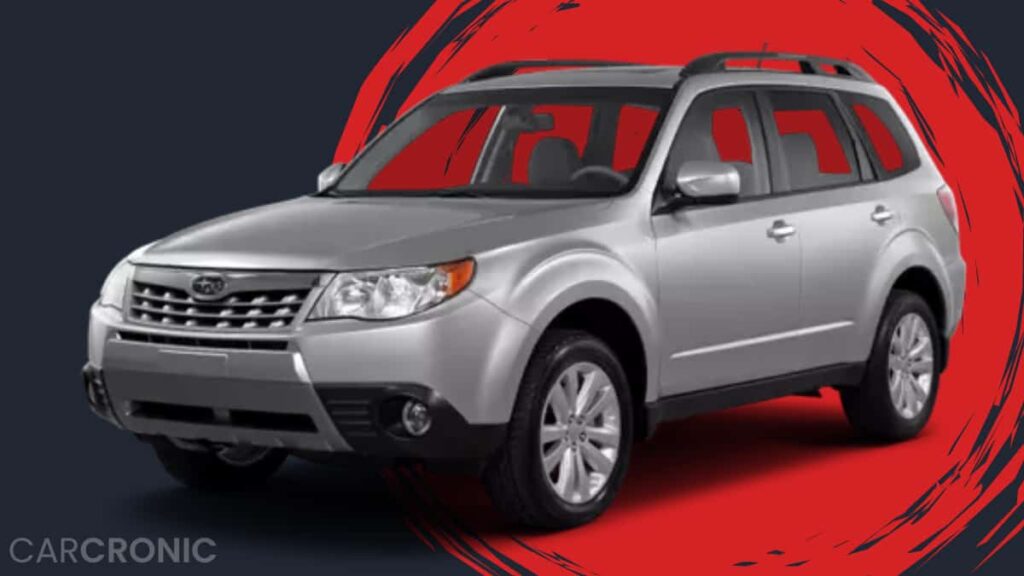
It was the Subaru Forester 3rd generation experienced both lows and highs throughout its production. The 2009 launch introduced a mix of rugged SUV features with refined comfort for families which makes it a flexible option for a variety of kinds of lifestyles.
The previous generation had issues and there was a significant increases in NHTSA recalls as well as customer complaints. It is vital for potential buyers to scrutinize the VIN of their vehicle (VIN) prior to making any purchases to make sure they do not inherit issues that have already been solved. The Forester’s revamped platform, upgraded interior functions and modernized design demonstrated Subaru’s commitment to improving the overall experience of driving.
Best Year Subaru Forester: 2011, 2012
In 2011, and 2012, the Subaru Forester models were praised by Subaru’s dedication to improve efficiency and reliability. There were an average recall of fifteen the models came with trim levels such as 2.5X Limited, Premium and XT. 2.5X limited, premium as well as XT that came with turbo-powered options.
The interior was available in the light gray or black colors. It was also available with three options for upholstery which included leather. Subaru’s Symmetrical All-Wheel Drive technology and enhanced suspension settings provided smooth and stable ride.
The fuel efficiency was 16 mpg within the city and 28 miles per gallon on the highway The third generation Forester offered efficiency. Subaru made the Forester specifically to suit off-road conditions by adjusting the clearance of the ground and all-wheel drive settings to improve rugged conditions.
Reviewers and customers have praised these models due to their excellent ratings for satisfaction from owners and the fewer complaints and proving their worth in the time.
The Most Worst Years The Worst Years: 2009, 2010 2013,
In 2009 and 2010 as well as 2013, Subaru Forester models faced numerous problems, particularly in terms of reliability and safety. The 2009 model was plagued by major recalls that were related to frontal airbags inflators of the passengers which could pose a high danger of explosion. Electrical malfunctions, the supply pipes for engine oil and seat welds were also complained about by owners.
In the case of the Subaru Forester, complaints were raised about the driver’s seat’s welds breaking, as well as head gasket leaks. The 2013 Forester had fewer recalls, but nonetheless, it was not without its fair number of problems that hurt its reputation for reliability and performance.
The Best and Worst Years of Subaru Forester 4th Generation (2014-2018)
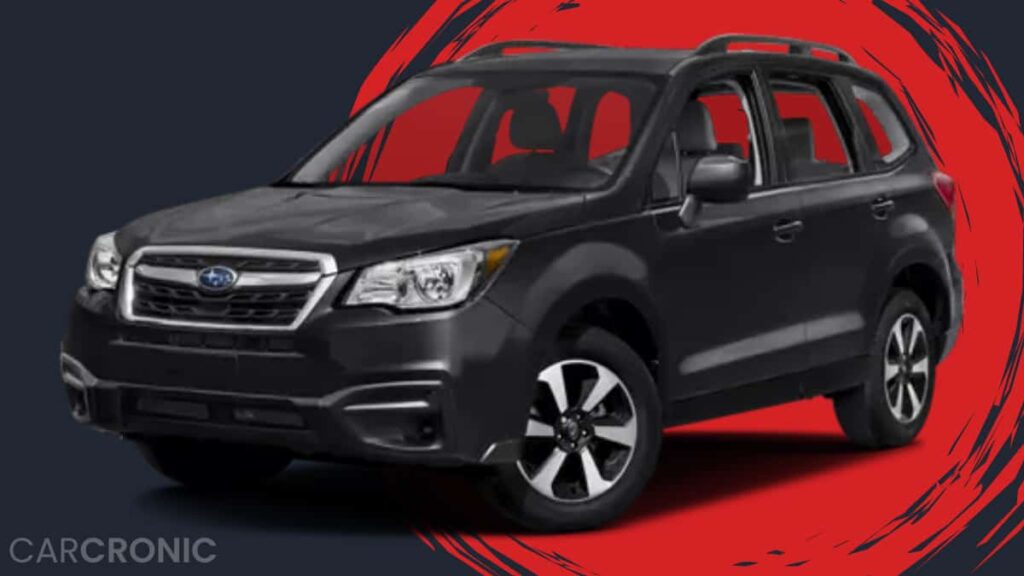
Fourth generation Subaru Forester was launched in recognition of Subaru’s desire to correct earlier mistakes and adjust to the rapid changes in the automobile industry.
This generation saw Subaru really bring together the two aspects between urban chic and off road toughness with the Forester.
The Best Years: 2016and 2018,
In 2016, and 2018, the 2016 Subaru Forester models emerged as the most impressive models from this generation.
The models include 2.5i in the base Standard, Premium, Limited, and top-of-the-line Touring versions and a turbocharged performance-oriented 2.0XT (253 PS) in Touring and Premium versions.
The 2016 Forester included Subaru’s famous Eyesight Driver Assist technology as well as a range of safety features which included an adaptive cruise controller, pre-collisionbraking and lane departure warning and Sway warning.
Additionally, the years of these were marked by an upgrade in the quality of interiors by incorporating more premium materials as well as advanced infotainment systems. The cabin’s performance and noise isolation were significantly improved and suited to the requirements of commuters from the city and road users.
Another notable addition to these times is the X-Mode function to the AWD system, which optimizes the performance of the vehicle on difficult conditions and terrains.
The fuel efficiency of the fourth-generation Frontier increased to 18 mpg city and 35 mpg on the highway.
The worst years The Worst Years: 2014, 2015, 2017
The 2014 Forester model, which was the first model of this generation, had issues with its teething. Owners complained of issues regarding the Occupant Detection Systems (ODS) that led to the illumination of the passenger airbag warning light.
In addition, suspension issues were reported in the form of reports of the front suspension shaking at higher speeds, which caused vehicles to shake. Another frequent complaint was the high oil consumption, a problem Subaru was faced with previously.
The 2015 Forester was rumored to have inherited certain issues from the previous model. Airbag issues remained, culminating in a major recall in the year 2019 for specific models from 2015-2018 due to malfunctioning ODS. In addition numerous reports of engine issues mostly related to excessive consumption of oil.
A further issue that was reported from the owners of their vehicles was car’s unstable speed control, in which the car would randomly increase or decrease speed. Despite the increase in concerns, Subaru haven’t issued any recalls as of yet.
In 2017, the 2017 Forester complaints focused on cracks appearing on the windshields, a problem which was reported to be affecting a variety of models in this generation.
Additionally, a service program was launched through Subaru of America Inc. to check and repair, if needed the condenser air conditioner assembly on certain models of 2017 and 2018. The reason for this was the potential for corrosion in the tubes of the condenser which can lead to leaks in refrigerant as well as a reduction in efficiency of cooling.
Best and Worst Subaru Forester Years, 5th Generation (2019-present)
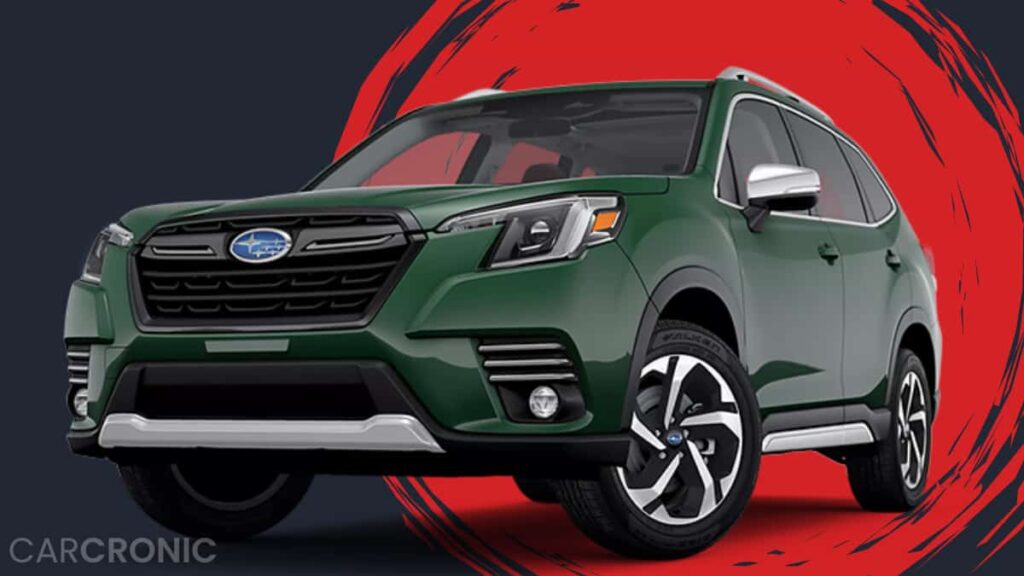
Subaru Forester 5th generation Subaru Forester 5th generation, which was introduced in 2019, offered major improvements compared to the previous generations. With an extended wheelbase and sleek design revamp The Forester improved interior space as well as a more modern design. The years since its introduction have seen constant improvements in technology and safety features.
The most successful time to buy this model Forester fifth generation came in 2021. Subaru introduced driver assistance technology and improved entertainment options. This year, it also received the highest praise for its durability and comfort on long journeys.
Most excellent Subaru Forester Years:2021, 2022 and 2023
The most productive times in the history of Subaru Foresters are 2021, 2022 and 2023. With a powerful 2.5-liter flat-four motor, the models are a class above in delivering power and a high level of efficiency. The all-wheel drive system is symmetrical and makes it easy to transition seamlessly between urban roads and off-road excursions. It is available in various trims including Basic Standard, Premium, Sport Touring, Limited, and Touring The Forester is able to meet the needs of different types of people.
The standard equipment includes the Starlink multimedia system that has an easy-to-use 6.5-inch touchscreen. Modern safety technology, such as Eye-Sight Driver Assist Technology. Eye-Sight Driver Assistant Technologyenhance the confidence of drivers with Lane centering and ad-hoc cruise control features. They also have amazing efficiency ratings in fuel consumption of 20 mpg within the city and 38 mpg when on highways.
In 2021 – 2323, the Subaru Foresters stand out as vehicles that combine performance technological advancements, safety, and performance seamlessly to provide a better driving experience.
The Neutral Years The Neutral Years: 2020
In 2020 in 2020, the Subaru Forester entered a phase of transition while retaining its classic style and performance standards. In comparison to the previous year’s model in 2020, the Forester was less troubled, but was short of features that were more advanced.
The owners reported a frequent windshield issue that caused cracks to pop up but overall reliability and safety was maintained. The car remained faithful to Subaru’s reputation as a tough vehicle which makes it a dependable option for buyers of compact SUVs.
The Worst Years of 2019:
In the year 2019, Subaru Forester owners faced many issues that affected the safety of their vehicles as well as their functionality. Cracked windshields were a common issue, which could pose a risk for the positioning of the Eye-Sight cameras from Subaru. The expense of replacement windshields, which was estimated at $1000 or more is a significant burden for the owners. The failures of the Thermostat Control Valve (TCV) affected the temperature control with no recall from Subaru to address the issue.
Eye-Sight’s safety feature experienced intermittent issues, with reports of it shutting off suddenly. Another issue that was reported frequently was battery drain for models between 2016 and 2022. The combination of these issues led to an unpleasant experience for a large number of Subaru Forester owners in the year 2019.
Subaru Forester Average Resale Values

This graph provides a comprehensive overview of Subaru’s typical value of resales over time that reflect its lasting popularity and dependability in the auto market.
Conclusion
When you look back over the development of the Subaru Forester over time It’s clear that certain particular years are distinctive. We suggest prioritizing the top-rated years to ensure the highest quality and value. Also, avoid the most dreadful Subaru Forester years we listed at all costs.
What Subaru Forester year has caught your attention the most and what was the reason? Does any model resonate with you? own personal memories?
FAQ: Best & Worst Subaru Forester Years
What are the shortcomings of the Subaru Forester?
8 Common Subaru Forester Problems
Parasitic drain of the CAN System to the Battery.
Unintentional Acceleration.
Brake Light Switch Problem.
Cracked Windshields.
Lineartronic CVT Reliability.
Rodents eat at Subaru’s Soy Wires.
Subaru EyeSight Problems.
Subaru vehicles that have Original Takata Airbags.
Is Subaru Forester a reliable car?
It is predicted that the 2024 Subaru Forester has a predicted reliability score of 84 points out 100. A J.D. Predictive reliability of Power between 91 and 100 is considered to be the best score, 81-90 is Excellent 70-80 is average and 0-69 is considered Fair. thought to be as below the average.
What is the longest lasting Subaru has the longest lifespan?
Legacy The Subaru Legacy is a midsize sedan that is known for its durability and reliability. With the right maintenance, Legacy models can easily endure well past 100,000 miles, giving many years of reliable service.
Which Subaru model Subaru is the most secure?
Which Subaru models earned the IIHS TOP SAFETY PICK IIHS TOP SAFETY PICK+ rating in the model year 2024? Subaru Ascent, the Subaru Ascent SUV was named 2024’s IIHS TOP SAFETY PICKPLUS. Additionally, the brand new 2020 Subaru Impreza earned the 2024 IIHS TOP SAFETY PICK Award alongside Subaru Outback and Subaru Outback and Subaru Solterra.
Which kind of year makes Subaru that is the best reliable?
One of the more recent standard for Subaru -as well as the top-selling model until 2022. The Crosstrek has grown into one of the company’s most reliable models and has JD Power giving the 2023 model year a score of 81/100 in terms of reliability.



